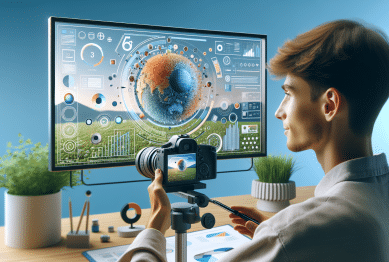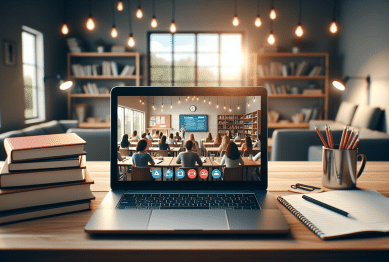In an age of endless streaming options, overflowing bookshelves, and ever-updating social feeds, it may seem odd that people keep returning to the same movie, book, or song over and over again. But repetition isn’t laziness. It’s a powerful cognitive habit. In fact, why people rewatch, reread, and repeat is now a widely studied phenomenon in psychology and behavioral science. From emotional regulation to memory reinforcement, this tendency is much more than nostalgia.
Understanding this behavior isn’t just intellectually satisfying—it can help creators, educators, and digital platforms better engage audiences in more meaningful ways.

Familiarity as a Form of Cognitive Comfort
Let’s start with one of the most obvious reasons people repeat content: emotional safety. Rewatching a series like The Office or rereading Harry Potter offers a known world, where nothing is unexpected and outcomes are familiar. In times of uncertainty or stress, these “safe zones” provide control in a chaotic world.
According to a 2020 study published in Media Psychology, reconsumption of media is often tied to self-soothing, where individuals seek out known narratives to regulate mood and stress levels.
In other words, familiar content acts like an emotional anchor. And in a culture of hyper-stimulation and decision fatigue, knowing what you’re getting becomes a form of mental relief.
Repetition Strengthens Learning
Beyond comfort, repetition is also a cornerstone of deep learning. In educational psychology, re-reading is a well-known technique for encoding knowledge into long-term memory. What surprises many is how this concept also applies to entertainment media.
When someone re-watches a documentary or rereads a complex novel, they’re not just revisiting the plot—they’re refining their understanding, noticing missed details, and mentally connecting the dots.
Dr. Elizabeth Bjork, a cognitive psychologist at UCLA, highlights the concept of desirable difficulties in learning: activities that feel harder, such as rereading in spaced intervals, actually lead to better retention over time.
Repetition doesn’t just confirm what we know—it deepens it.
Emotional Forecasting and Psychological Closure
We tend to think of repetition as indulgent or even inefficient. But psychologists argue it’s often goal-directed behavior.
In her paper “Repeated Exposure and Liking”, psychologist Dr. Eva Krumhuber notes that when individuals experience a story for the second or third time, they’re better able to emotionally forecast—meaning, they can anticipate how the story will make them feel and choose it deliberately to suit their mood.
This is particularly true for endings. Whether it’s a finale that feels unresolved or a twist that catches you off guard, repetition can help us reach psychological closure, providing a sense of resolution that the first experience couldn’t.
Nostalgia Is Not Just Sentiment—It’s Strategy
Another layer to this habit is nostalgia, but not the shallow kind. Neurological studies suggest that nostalgia activates areas in the brain associated with reward processing and self-continuity. That means revisiting old favorites is a way to reconnect with parts of ourselves and reinforce identity.
For example, a 2021 study from the University of Southampton found that nostalgic experiences not only increased positive mood but also gave people a greater sense of purpose and belonging.
This is why rewatching a show from your teenage years or rereading a book from childhood often feels like time travel—it’s reinforcing your sense of who you were, and who you still are.
The Algorithm Learns You Better Than You Know Yourself
Today, repetition is no longer just a personal choice; it’s algorithmically encouraged. Streaming platforms like Netflix and Spotify actively promote rewatching and re-listening through data-driven suggestions based on your viewing history.
This kind of behavioral mirroring reinforces your preferences and builds what’s called a “feedback loop of familiarity”. As machine learning becomes more advanced, platforms are increasingly designed not just to expose you to new content, but to strategically serve you what you’re most likely to re-consume.
Interestingly, platforms report that rewatchable content (like comfort comedies or short documentaries) often sees more cumulative engagement than brand-new titles with a one-time spike.
Productivity Culture Has Made Repetition Feel “Lazy”
In modern productivity-driven culture, repeating something you’ve already seen can feel like wasted time. But that assumption is flawed. Repetition is often less about passivity and more about integration—bringing a familiar story or idea into a new cognitive context.
Think about rereading a book at different ages. At 20, you see ambition. At 40, you notice sacrifice. The text hasn’t changed, but you have.
This makes repetition not just nostalgic or efficient—but transformative. What was once passive media becomes active reflection.
Why This Matters for Creators, Educators, and Brands
Understanding why people rewatch, reread, and repeat gives creators and educators a strategic advantage. Whether designing a curriculum or building content platforms, acknowledging the role of familiarity can lead to smarter user experiences.
Here’s how:
- Micro-learning systems can use repetition to reinforce content across time without fatiguing learners.
- Content creators can design modular, episodic formats that invite repeat consumption.
- Brands can leverage nostalgia marketing not by pandering, but by respecting memory and continuity.
How to Intentionally Use Repetition in Learning and Work
Want to make smarter use of repetition in your life? Consider these evidence-based strategies:
1. Use Spaced Repetition Systems (SRS)
Popularized by apps like Anki and SuperMemo, SRS leverages cognitive science to optimize review intervals. It’s not about rote memorization—it’s about timing.
2. Schedule Rereading and Review Sessions
Instead of treating rereading as a fallback, treat it as a feature. Block out time to reread key articles or notes at set intervals to see what new insights emerge.
3. Build a “Media Loop” for Emotional Regulation
Just as you’d build a workout or meal plan, create a repeatable media list for when you’re tired, overwhelmed, or uncertain. This can serve as a cognitive recharge instead of passive scrolling.
4. Use Repeat Viewing for Creative Analysis
Rewatch shows or films not for entertainment, but for technique. What choices did the creator make? Why do certain scenes land? Repetition sharpens perception.
Conclusion
The reason why people rewatch, reread, and repeat isn’t laziness—it’s layered. It involves memory consolidation, emotional safety, identity reinforcement, and active reflection. In a digital culture obsessed with what’s next, repetition remains one of the most underappreciated tools for deeper learning and connection.
By recognizing the patterns behind our repetitive habits, we can begin to use them intentionally—both to understand ourselves and to engage with the world in more meaningful ways.
Referenced
- Reconsumption and Mood Management
“Repetition, Reconsumption, and Mood Regulation: A Study of Media Use During Times of Stress”
Published in Media Psychology (2020)
https://www.tandfonline.com/doi/full/10.1080/15213269.2020.1779856 - Bjork Learning and Forgetting Lab
Dr. Robert and Dr. Elizabeth Bjork, UCLA Psychology Department
Research on learning, desirable difficulties, and long-term memory retention
https://bjorklab.psych.ucla.edu/ - Repeated Exposure and Emotional Response
“Repeated exposure and liking: A meta-analysis of the mere exposure effect” by Krumhuber et al., Frontiers in Psychology (2022)
https://www.frontiersin.org/articles/10.3389/fpsyg.2022.926412/full









